Hibiscus plants have beautiful flowers that can make any garden spectacular. There are many different types of plants, so there are many flower colors that you can get. In addition to flowers, Hibiscus plants also have beautiful leaves. Their leaves are shiny and strong, contrasting the flowers with their dark, dark green color. The Hibiscus flower lasts only one day, although many new hybrids have been bred, which now last longer, even up to three days.
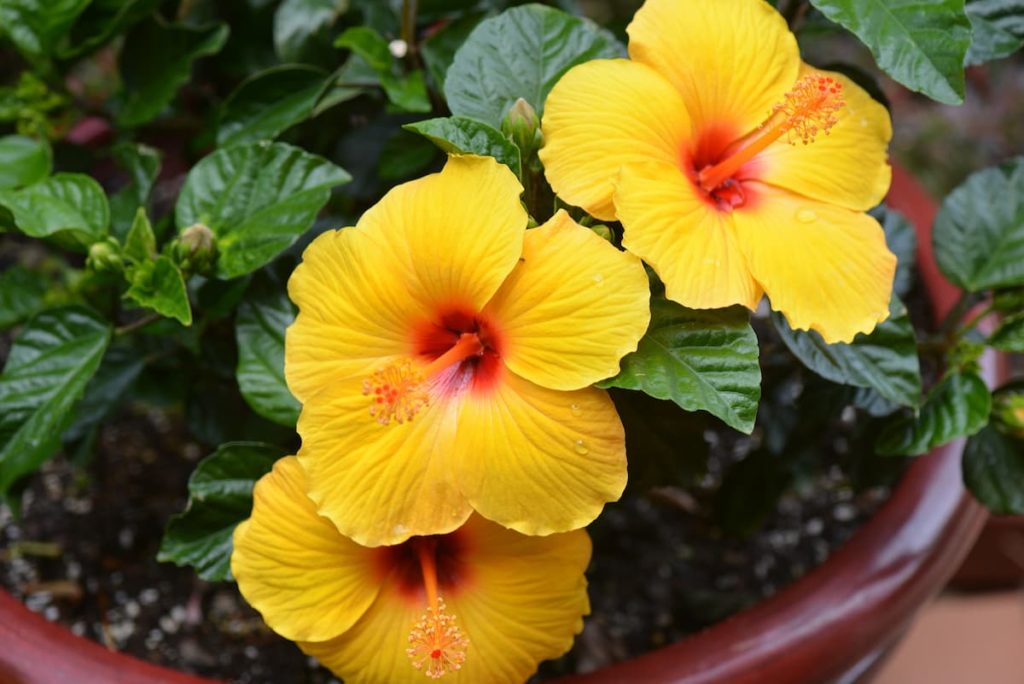
Hibiscus, whether Tropical Hibiscus or Hardy Hibiscus, can be grown in the home garden, and both types of Hibiscuses are propagated in the same way. Hardy Hibiscus is easier to propagate than Tropical Hibiscus but never fear. With a bit of knowledge about how to propagate Hibiscus, you may be able to grow any type.
How to grow Hibiscus from cuttings to harvest
Growing Hibiscus from cutting
- You can propagate both hardy and Tropical Hibiscus from cuttings. Hibiscus cutting is generally the preferred way to propagate Hibiscus because cutting will become an exact copy of the parent plant. When using Hibiscus cutting to propagate Hibiscus, start by taking the cutting.
- Hardy Hibiscus is easy to grow. By taking cuttings, properly rooting them, and planting them, you can grow new, healthy Hibiscus plants without buying them.
- Keep the Hibiscus cutting in a partial shade. Make sure the rooting soil remains moist (not wet) until the Hibiscus cutting is rooted. The cutting should be rooted in about eight weeks. Once they’re rooted, you can repot them in a large pot.
- Trim a stem with smooth green growth and lots of leaves. Remove the top 2 to 3 additional leaves and cut the bottom end diagonally. You should dip the stem end in the rooting hormone and drop it into a cup of water or soil. Leave cutting in indirect sunlight for four weeks until the roots begin to grow.
- The process is the same for tropical and hardy varieties, and it’s easy to do so at home. Carefully pull the leaves from the lower half of the Hibiscus stem cutting. You should dip the bottom of the Hibiscus stem into a liquid or powder rooting hormone. Although the hormone is not a requirement, it speeds up the rooting process.
How long does Hibiscus take cuttings to root?
- Cover the pots and cuttings with plastic bags and place them in a warm, brightly lit room, as with deciduous hardwood cuttings. Providing lighting is essential for the successful rooting of these cuttings. Check the roots once a month. It may take three or four months for the roots to grow.
- Many traditional Tropical Hibiscus varieties can live longer than 50 years, but new hybrids live up to 10 years old. The planted cutting may start blooming in two months and give you some beautiful Hibiscus flowers.
- Once they’re rooted, you can repot them in a large pot. Be warned that Tropical Hibiscus will have a lower success rate than Hardy Hibiscus. Still, if you start multiple cuttings of Tropical Hibiscus, there’s a good chance that at least one will root successfully.
In case you missed it: Growing Hibiscus Plants in Pots from Cuttings, Seeds
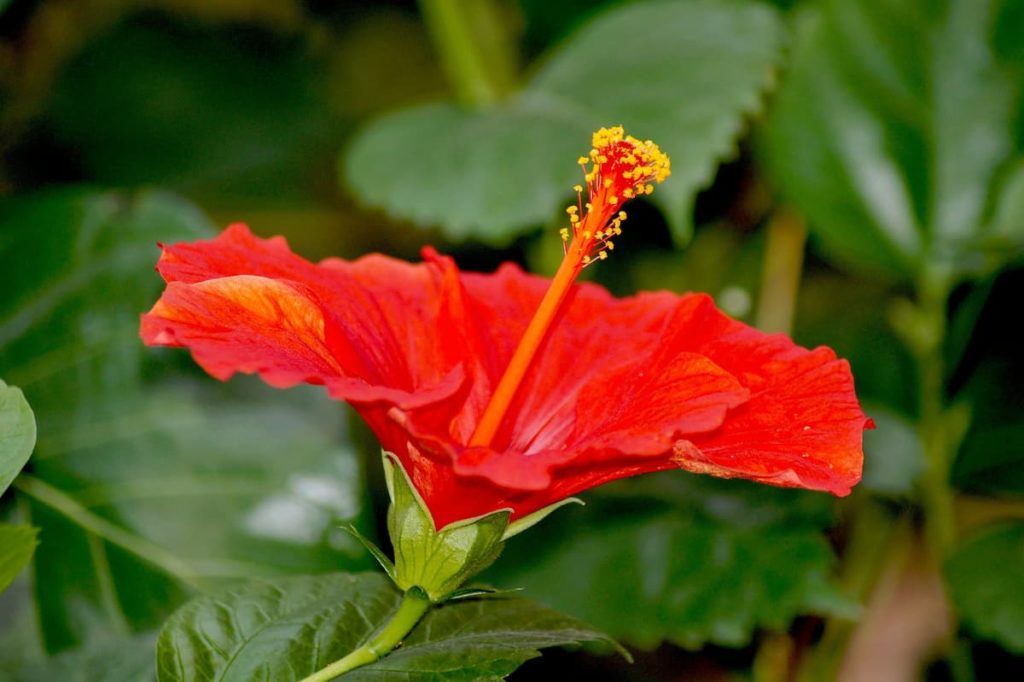
Growing Hibiscus cuttings in water
- Propagation by stem cutting works well for most woody ornamental plants, including Hibiscus shrubs. Although Hibiscus cutting can root in plain water, using a soil or soilless medium promotes a high rooting success rate.
- You can easily start Hardy Hibiscus from cutting than Tropical Hibiscus. However, both types are vigorous growers. Both types are easy to start with cutting. Fill 3/4 of the water in a glass, dip the stems in them and keep them in a partial shade.
- Then, in about a month, you’ll notice that small roots begin to form. Additionally, when Hibiscus starts forming roots in the water, you can place multiple cuttings in a container or vase to save space and simplify the process.
Growing Hibiscus in pots
- Hibiscus performs well in most types of containers. Plastic is a good option because it’s lightweight, and the plant will likely grow bigger, so it can be easier to move the plant. Although you prefer terracotta and ceramic, it also works well for Hibiscus.
- Do not plant Hibiscus in a clay pot, as these containers gradually convert the soil into alkaline by dispensing the minute particle. Use pots with at least four drainage holes at the bottom. Hibiscus thrives in any soil but should be well dried.
- Since the Hibiscus can be large, you may want to choose a stronger pot. Lengthy Hibiscus varieties can reach 5 to 6 feet in height. Smaller varieties typically grow from 2 to 5 feet.
- While the best pot size depends to some extent on the size of the Hibiscus plant, the Hibiscus produces a wide root ball rather than a deep one. For this reason, use a pot at least 10 inches wide for a young, nursery-grown specimen.
Sun requirement for growing Hibiscus
- All Hibiscus plants grow best in full sunshine. Tropical Hibiscus requires moist but well-drained soils. Perennial Hibiscus grows best in moist soils that are never completely dry. Hibiscus that receives too much sunlight may experience sunburn. Excessive sunlight will destroy the chlorophyll of the leaves and cause them to bleach out and become crispy around the edges. Sunburned leaves will die and fall, but new leaves will replace in a few weeks.
- The Hibiscus is also very sensitive to extreme heat. If the temperature is 32°C or buds will fall, and the leaves will turn yellow and fall. Hardy Hibiscus works best in full sunshine. They will grow in partial shade but will damage growth and flowering. If you have very hot summers, during the hottest part of the day, Hibiscus may need shade. Hibiscus should be planted alongside or back of perennial flower beds.
- The more direct sun they receive, the better they will bloom. At least 6 to 8 hours is the maximum for prime flowers, but you can grow them in a bit of shade.
Water requirement for growing Hibiscus
- You should keep the soil around the Hibiscus moist but not soggy. You should water daily for the first week after planting, once every two days in the second week, and then twice a week after that when there is no rainfall. Suppose the weather gets particularly hot and dry, water every other day.
- Hibiscus likes a lot of water but doesn’t like to sit in constantly wet soil. If the soil is wet, wait to water. If it’s a little damp, this is the time you should water again. Hibiscus are water-loving plants, but they can be easily overwatered. Signs of excess water include yellowish and swollen leaves and a wilting plant, even though the soil is wet.
- You should keep Tropical Hibiscus plants constantly moist, so water whenever the upper inch of the soil is dry. You must water container plants 3 to 4 times weekly at the beginning of summer and daily as plants grow at the end of summer.
- Rainfall, humidity, and soil quality will determine how often the Hibiscus will be watered, but you will generally water the plant 3 to 4 times per week. Tropical Hibiscus plants typically require a lot of water, but too much or too little water can cause yellow leaves.
In case you missed it: Best Fertilizer for Hibiscus: Homemade, Organic, Liquid, NPK, and Compost Manure
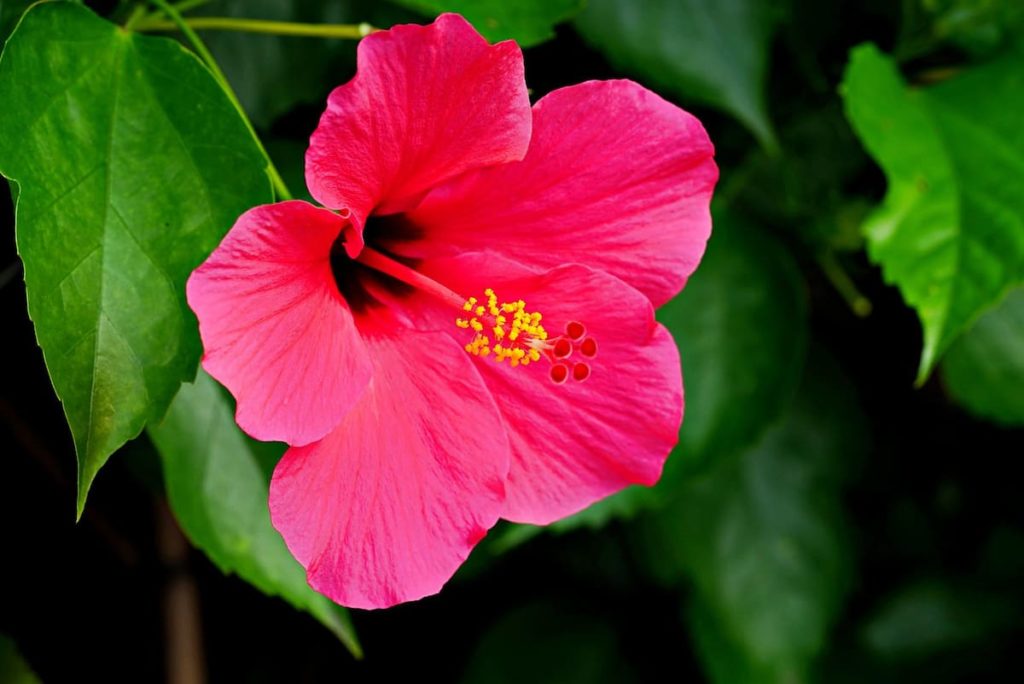
How do you care for a Hibiscus plant indoors?
- All houseplants have an ideal place where they will flourish indoors. As far as Hibiscus are concerned, they prefer to stay close to a bright window, where they will get as much sunshine as possible. Hibiscus likes to be watered, but of course, not overwatered. When they’re dormant in the winter, they can’t drink as much as they can. On the other hand, water can evaporate more quickly from a plant pot.
Fertilizer requirement for growing Hibiscus
- Hibiscus plants consume relatively large amounts of nitrogen, potassium, and very little phosphorus. When planting and annually as new development begins in the spring, fertilizer with analyses, such as 10-10-10, will provide a balanced start-up feeding.
- Hibiscus plants in containers should be fertilized slightly more frequently than ones planted in garden beds and should be sufficient about once a week during the bloom period. Garden Hibiscus should be fertilized once every two weeks. Nor is any fertilizer required during the winter months.
- You should fertilize your Hibiscus plant lightly and frequently. Ideally, you should fertilize weekly during the plant growing season and not fertilize during your area’s two coldest months. Slowly start fertilizing again when the weather starts to warm up. Use a diluted solution once every two weeks. Fertilize using liquid fertilizer every two weeks in the growing season or slow-release fertilizer every eight weeks.
Soil requirement for growing Hibiscus
- Hardy Hibiscus thrives best in well-drained soil, which is amended with organic matter. Hibiscus prefers acidic soil. You should add peat moss or potting soil to your garden to add acidity to your soil. If your soil has high clay content, consider planting Hibiscus in a raised bed, which helps to eliminate water build-up.
- Hibiscus grows best in slightly acidic soils with a pH between 6.5 and 6.8. Many potting mixtures yield better results than pure garden soil if you grow Hibiscus in containers rather than directly into the ground. A mixture of two parts of the soil, two parts peat moss, and one part vermiculite or perlite is good for Hibiscus.
What is the best month to plant Hibiscus?
- The best time to plant Hibiscus, either hardy or tropical, is in spring after the weather has warmed. The Hibiscus grows well in raised beds, especially if the soil doesn’t drain freely. Plant Hibiscus in the full sun in spring (perennial Hibiscus) or late spring/early summer (Tropical Hibiscus).
In case you missed it: Growth Stages of Flowering Plants: Rose, Marigold, Hibiscus, Dahlia, Gerbera Daisy, and Jasmine
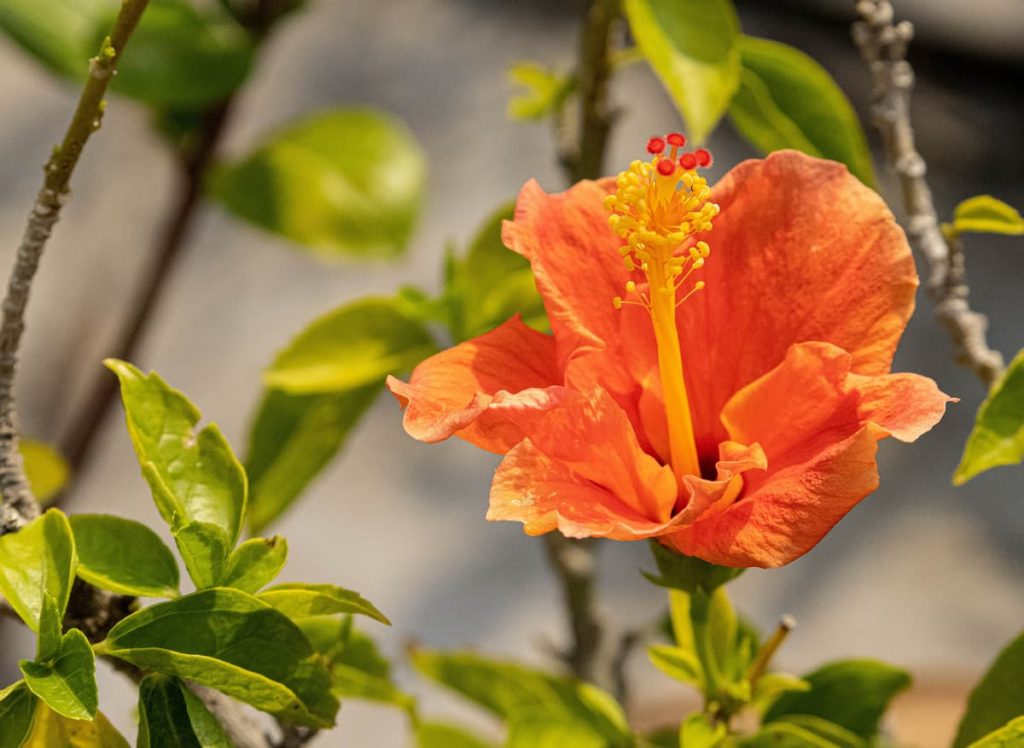
How long does it take Hibiscus to bloom?
All varieties of Hibiscus bloom from mid to late summer, the most popular month for this is August. The bloom cycle will usually last about 3 to 4 weeks. Although Hibiscus is known to bloom in the fall, it’s still very unlikely unless you live in an area where cooler weather is very mild.
Should I remove dead flowers from Hibiscus?
Deadheading, the process of removing faded flowers, can improve the appearance of the plant and prevent reseeding. Deadheading Hibiscus is not an essential part of Hibiscus flower care. Since Hibiscus plants do not require deadheading for their health or ability to bloom, some gardeners skip extra work. Hibiscus plants can survive and bloom well without deadheading in both tropical and hardy varieties.
Why are the leaves turning yellow and falling off my Hibiscus?
- Hibiscus requires extra water when extremely hot, especially in summer. The Hibiscus leaves can turn yellow if they do not get enough light. As tropical plants, Hibiscus plants require full sunlight to partial shade to thrive. Excessive direct sunlight can result in leaf sunburn, causing very few white spots on the plants.
- A Hibiscus leaf drop can be a sign of too much or too little water and insufficient drainage. Hibiscus plants have high water requirements; even once established, the plant will need to be watered regularly during warm, dry periods.
How do you stop Hardy Hibiscus from growing so tall?
- Cut the Hardy Hibiscus back in half, just like the Tropical Hibiscus cutting just above the node when the plant is 16 inches tall. This encourages additional stems to develop, giving plants a bushy growth with more flowers.
- Cut off the limbs that grow too tall at branch angles within existing plants. You may have to remove a foot or two of upward growths to reshape the plant. Another option is to remove the longest stems back close to the ground and allow the shorter twigs to continue to grow and flower.
- You should trim just above a leaf node so you get good, bushy growth at the point where you cut. Encourage the stalk to grow by slanting your cut in the direction you want the plant to grow.
Do Hibiscus have deep roots?
Hibiscus plants have a shallow root system, and plants risk blowing over in strong winds. The container Hibiscus will grow into a 10-inch pot, but the roots will extend several feet below the ground without constraint. Hibiscus shrubs can be up to 15 feet long, although they usually grow no longer than 7 feet in cultivated environments. A 3-gallon container, about 10 inches wide, is large enough to have a Hibiscus bush.
What month do you prune Hibiscus?
- To maintain a healthy height, you must ensure you know how to cut the Hibiscus. Make sure to cut its stems towards the end as they are from the previous season, and the plant will not bloom from these. You should do this in late winter or early spring before new development.
- You can cut Hibiscus plants lightly in late summer or early autumn, but no Hibiscus pruning should be done during late autumn or winter. These plants also appreciate hard pruning at the end of the growing season. Tropical Hibiscus will remain dormant outdoors in cold weather during winter. Tropical Hibiscus will bloom on new growth, but if you cut them severely, you’ll delay their growth and blooming for months.
In case you missed it: How to Prepare the Soil for Hibiscus Plants: Best Soil Mix, pH, Compost, and Recipe
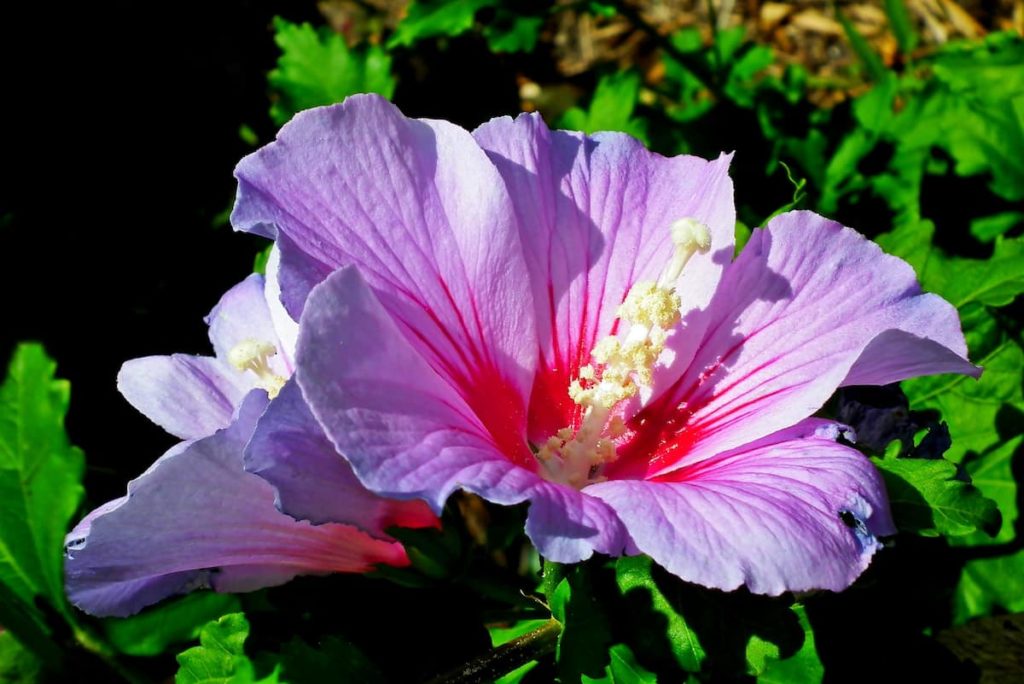
How do you winterize a potted Hibiscus?
- Once indoors, you should place Hibiscus in bright light daily. It relaxes somewhat during the winter, and at this time, it enjoys room temperature lower than your normal ones. You should not fertilize during the winter rest period.
- If your Hibiscus is in a pot, bringing it indoors and keeping it alive as a houseplant in the winter is easy. They aren’t too annoying and don’t require much care compared to your other houseplants. Just bring them in before the temperature drops below 15°C outside.
- You should provide consistent moisture but not allow the plant to stand in the water, which is a good practice for all houseplants. In winter, you should only water the plant when the soil is dry to the touch. If you water more than that, you can damage the roots. This will produce a large number of yellow leaves on your Hibiscus.
Do Hibiscus plants like to be root bound?
- In general, Hibiscus enjoys slightly rootbound situations because it makes them bloom better. But, if the rootbound reaches its extreme level, it will face problems. In this case, you’ll need to treat the problem by repotting the plant into a large pot and replacing the old soil.
- Determine whether the Hibiscus needs repotting by checking its existing container drain holes for protruding roots. You should loosen the plant in its container and lift it to better look at the roots. If the roots are tightly packed together, or a pot-shaped, narrow circle is formed, the plant needs to be replanted.
Why is my Hibiscus not flowering?
- Hibiscus requires a lot of sunlight to produce flowers. Thus, too little sun is the main reason for Hibiscus not flowering. You may need to adjust your feeding, pruning, or watering routine if your Hibiscus has too much sun but isn’t blooming. Pest attacks can also cause a lack of flowers.
- The Hibiscus does not flower due to too much shade, drought stress, or too much fertilizer. Nitrogen promotes plants at the expense of flowers, and too much phosphorus reduces Hibiscus flowering by stimulating nutrients in the soil.
- The only way your Hibiscus can bloom is to give it enough water. In some cases, depending on the heat and humidity, you may also need to water your plant daily. In some extremely dry conditions, water may be needed twice per day.
- When the plant stays moist, dries for a while, then remains moist, then dries again, Hibiscus buds can fall. To avoid this, try to keep your plants watered evenly. The most common cause of falling Tropical Hibiscus buds is excessive drying. Tropical Hibiscus varieties can drop buds before they have a chance to open. This usually happens when the plant is stressed.
What kills aphids on Hibiscus plants?
Some common insects that destroy Hibiscus are aphids, ants, thrips, coast flies, fungi, and mosquitoes. Most Hibiscus plants are affected by pests due to poor management techniques. Properly watering and feeding your plant will make it healthier and develop its natural resistance to these pests. You can easily kill aphids with solutions of horticultural oil, neem oil, or insecticidal soap. Essential oils such as Rosemary, Lavender, Garlic, or Hot Pepper oil can also help to kill aphids.
In case you missed it: 15 Common Hibiscus Plant Problems: How to Fix Them, Solutions, and Treatment
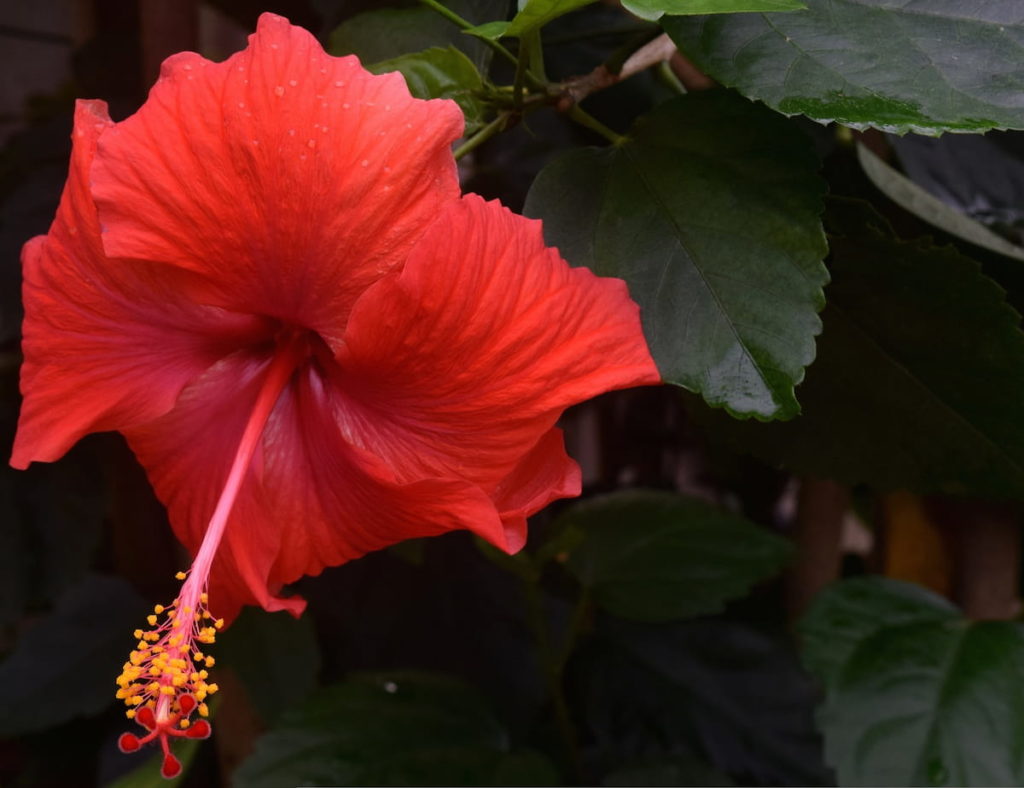
How deep do you plant a Hibiscus?
- Choose a place that receives full sun. They will grow in partial sunlight but will not even flower. Hibiscus prefers well-drained soil with plenty of organic matter and is neutral to slightly acidic soil. To avoid breaking long stems, plant Hibiscus where they will not be exposed to strong winds.
- You should dig each hole as deep as the roots and at least twice, if not three times, as wide as the roots. Loose the soil around the plant will allow better drainage and should not be tamped down. Place each Hibiscus plant at least 2 to 3 feet away. Consider a mature plant’s potential height and width (up to 12 feet and 10 feet, respectively) before planting.
Conclusion
To grow a Hibiscus plant, it’s essential to know how to make it produce numerous, rich flowers. It’s best to check for signs of pests, water stress, or malnutrition when choosing a plant to use as a cutting source. Yellow leaves, brown spots, or wilted appearance are all indicators of problems and suggest that the plant should not be used as a cutting source.
It roots more quickly from cutting than many other perennial shrubs, and newly rooted plants will be ready for transplant after just a few months. However, Hibiscus cutting should be taken at the right time of year and given the proper treatment to ensure successful rooting. After developing an appropriate root system, Hibiscus plants can be transplanted into the soil or individual containers.
- How to Grow Hibiscus from Flower
- Plantation Ideas for Home Decoration: A Beginners Guide
- Flower Garden Designs and Layouts for Beginners
- Planting and Spacing Techniques in Papaya: A Beginner’s Guide
- Growing Gold: Essential Techniques for Planting Pineapples
- How to Make Kalanchoe Plant Bushy: Home Remedies and Solutions
- 11 Reasons Why Your Gardenia is Not Blooming: Home Remedies and Solutions
- Eco Elegance: The Guide to Designing a Drought-Tolerant Landscape
- Gardening on a Slope: Strategies for Hillside Landscaping
- Nourish and Flourish: Top Organic Mulches for Thriving House Plants
- Everything You Want to Know about Indian Mogra Flower: Discover Uses and Growing
- Green Thumb Success: Expert Tips for Cultivating Greenhouse Pumpkins All Year Round
- Maximize Growth & Flavor: The Ultimate Guide to Companion Planting in Herb Gardens
- How to Control Rhododendron Problems Naturally: Home Remedies and Organic Ways to Fix Them
- Natural Magic: The Remarkable Benefits of Cinnamon for Plants
- Best Steps to Revive Dying Tulip with Natural and Organic Treatment
- 10 Reasons Why Your Angel Trumpet is Not Blooming: Remedies and Treatment
- How to Fix Periwinkle Leaf and Flower-Related Problems: Natural Remedies and Solutions
- How to Fix Zinnias Leaf and Flower Problems: Discover Natural and Home Remedies
- Organic Steps to Induce Lemon Tree Flowers: A Comprehensive Guide
- Bloom Booster: Crafting the Perfect Homemade Bougainvillea Fertilizer
- Optimizing Growth: A Guide to Applying NPK Fertilizer for Potted Plants
- 10 Best Homemade Fertilizers for Rubber Plant: DIY Recipes and Application Method
- How to Boost Female Pumpkin Flowers: Effective Steps for More Flowers and High Yields
- Transform Your Indoor Garden: Top Benefits of Pink Salt for Houseplants
- 10 Best Homemade Fertilizers for Peacock Plants (Calathea): Easy DIY Guide
- Unlock Blooms: 9 Reasons Why Your Potted Chrysanthemum is Not Blooming
- 8 Reasons Why Your Potted Hibiscus is Not Blooming: Fix it with Simple Solutions
- Unlock Blooms: 9 Key Reasons Your Potted Frangipani Won’t Flower
- 10 Reasons Why Is My Ice Plant Not Blooming: Remedies and Treatment
- 10 Reasons Why My Potted Hydrangea Not Blooming: Treatment and Remedies
- 10 Reasons Why is My Wisteria Not Blooming: Remedies and Treatment
- 10 Reasons Why is My Goldfish Plant Not Blooming: Remedies and Treatment
- Maximize Your Space: Ultimate Guide to Balcony Gardening with Grow Bags
- 10 Reasons Why Your Iris is Not Blooming: Remedies and Treatment
- 10 Reasons Why Your Anthurium Plant is Not Blooming: Treatment and Remedies